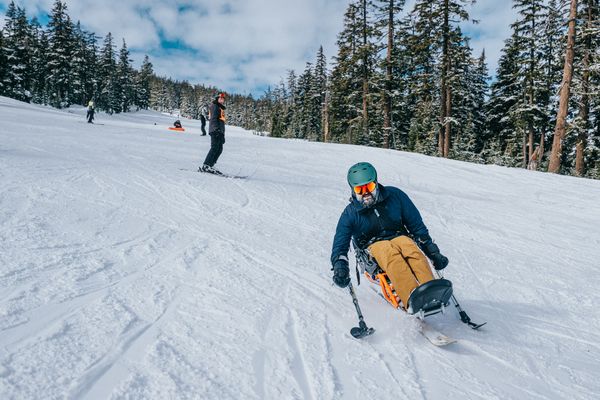Investors have lofty expectations heading into the Vail Resorts (MTN 1.69%) earnings report on Thursday, Sept. 26. The global ski resort giant increased its earnings guidance twice so far this fiscal year, and that positive momentum has supported the stock price lately, with returns inching toward the broader market's 20%.
On Thursday, Vail isn't likely to announce robust sales, since the fourth-quarter fiscal period spans the summer months that mark a seasonal low for the business. Still, the latest trends on season-pass sales will determine the targets that management issues for the new fiscal year. Investors will also receive key updates on Vail's capital spending programs aimed at reducing its exposure to poor snow conditions.
Let's take a closer look.

Image source: Getty Images.
Hitting the numbers
Vail has succeeded in building out its geographic footprint in recent years, but most of its business still comes from ski-related sales in the North American market. Given that it was too warm for snow across its properties in the Western United States and Canada, that makes the fiscal fourth quarter a relatively weak one. Most investors who follow the stock are expecting sales to rise 14% to $240 million. For context, Vail reported over $800 million of revenue in the fiscal third quarter.
The upside to that seasonality is that there isn't likely to be any big surprises around this consumer discretionary stock's actual fiscal 2019 results. Management's early June forecast called for adjusted earnings to land at just over $700 million for the year versus $617 million in fiscal 2018. This year's results benefited from a larger base of properties, and better ski conditions in Colorado and Utah.
Season passes
Season pass growth is the metric that's likely to hold investor attention this week, since there's a direct correlation between those trends and the visitation levels that Vail manages in a given year. The early 2019/2020 results were encouraging, with revenue rising 13% thanks to increases both in volume and average prices.
But investors will be looking for continued season pass momentum, especially since Vail has a larger base of properties that it can market to ski fans. Access to these resorts is ideally coming at higher average prices, too, to reflect the massive upgrades in ski lifts and lodging that management has made to places like Whistler Blackcomb in British Columbia.
Capital updates
CEO Rob Katz and his team will issue their first outlook for the new fiscal year on Thursday. And, with a highly seasonal business that's sensitive to economic swings, that prediction comes with the usual caveat that it is likely to see major revisions, especially right at the start of peak snow season.
This year's forecast will be the first one to include the network of snowmaking machines that Vail has installed across many of its resorts, though. The machines should allow for more-stable ski conditions around the December holidays, which might remove one key weather risk as management looks to fiscal 2020.
Vail will still require decent snow conditions during the peak winter months in order to maximize the appeal of its resorts and keep visitation and earnings climbing after this past season's spike. Investors won't have a good grasp on those trends until its midseason update in January.






